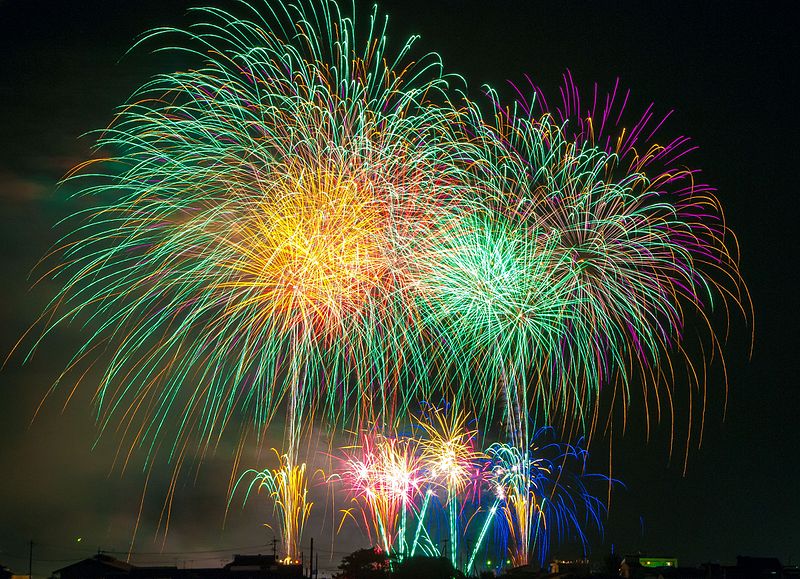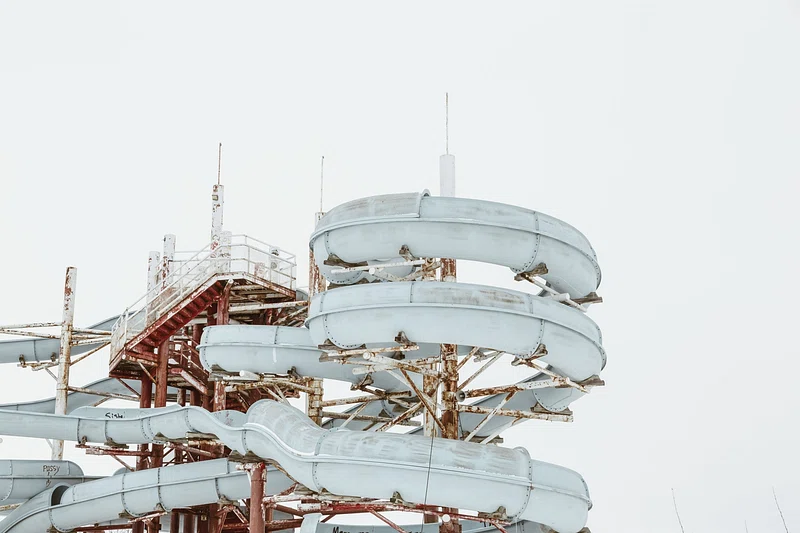We have officially entered August, the hottest month in Japan, and whether you’re looking to escape the heat or soak up more sunshine, we have just the list of activities to make your summer in Japan unforgettable.
Table of Contents
- Visit Kanagawa’s island getaway, Enoshima
- See the great Buddha of Kamakura and get your vitamin sea
- Join the festivities at a traditional Japanese summer festival
- Marvel at firework displays
- Rent yukata in Asakusa and gorge on kakigori
- Spend a whole day at one of Kanto’s water parks
- Conquer Mt. Fuji
- Escape the city and the heat in Nikko
- Barbeque with friends along the Aki river in west Tokyo
- Catch and slurp soumen noodles
- FAQ
1. Visit Kanagawa’s island getaway, Enoshima

With summer in Japan being as hot as it is, a trip to a local island with cooling sea breezes and ocean waves may be just what you need. Enoshima, a little island off the south coast of Kanagawa, is well known for its hot springs, beaches and awe-inspiring caves. It can be reached from Shinjuku station in just one hour, traveling on the Odakyu line, making it a popular day trip destination for Tokyoites.
Enoshima is particularly well known for its shrine, perched on top of a hill in the center of the island, and much like Paris’ Pont des Arts bridge, there is a fence with dozens of padlocks attached. It is said that if couples write their names on a padlock, attach it to the fence then ring the bell, they will stay together forever. The shrine is not just for couples, however, as many samurais prayed here for wealth and success in battle and people continue to pray here for money and success in business. Nearby you’ll also find the Zeniarai Pond (銭洗池) with a stunning white dragon statue. It is said that if you wash your money here, more money will come your way.
The Iwaya caves, another must-see location in Enoshima, can be reached by either hiking through the island or by boat. The caves are only open 9am to 5pm from March to October and 9am to 4pm during the winter months. You’re sure to find these caves entrancing as you walk through with a candle to light your way.

2. See the great Buddha of Kamakura and get your vitamin sea

Kamakura is a small coastal town in the south of Kanagawa, famous for its temples, shrines, hiking routes and sandy beaches that attract surfers all year round. The most attractive aspect about this town though, is how accessible it is from central Tokyo. Kamakura can be reached within 60 minutes via train which makes it ideal for day trips.
The great Buddha of Kamakura, in Kotoku-in (高徳院) Temple, is a popular point of interest for many travelers. Standing at 9.2 meters, it is the second largest Buddha statue in all of Japan after the Buddha statue in Todaiji Temple, Nara. What’s more is that you can even go inside this Buddha statue! Another temple worth visiting in Kamakura is Hokokuji temple, which is home to over 2,000 bamboo trees and is sure to be a much more peaceful bamboo grove experience than Kyoto, which can get very crowded.
If you visit Kamakura, don’t forget to also stop by Komachi street for laid-back cafes and souvenirs, especially Kurumi-ko, a walnut and caramel snack that originates from Kamakura. Kamakura is very close to Enoshima, in-fact you can visit them both when you purchase the Enoshima-Kamakura Free Pass, a train ticket that allows you to travel around Kamakura and to Enoshima on a retro train. Although to fully appreciate both, you might want to stay the night at a nearby hotel or Airbnb.
3. Join the festivities at a traditional Japanese summer festival

We’re within the week of Obon, an annual Buddhist celebration to commemorate the ancestors of one’s family in early August, and there will be many festivities held all over Japan related to the occasion.
On the 13th of August, the annual “water-splashing festival”, otherwise known as the Fukagawa Hachiman Festival, will take place at Tomioka Hachimangu Shrine in Koto. This festival is considered one of the great three festivals of Edo. Throughout the procession, people splash purifying water on mikoshi, portable shrines. There is also a taiko drum performance and the festival continues into the evening.
On the 2nd of August, the Tsukiji Hongwanji Obon Odori festival took place at Tsukiji Hongwanji Temple. This festival is worth noting for next year, 2024, as it’s a fantastic opportunity to visit Tsukiji. It is a lively festival with dancing, singing and food stalls that give a taste of delicious Tsukiji cuisine.
4. Marvel at firework displays

If there was one image of summer in Japan, it would probably be hanabi (花火, はなび, hanabi = fireworks). With a lift on Covid 19 restrictions, Tokyo is seeing the return of some of its biggest firework festivals. (花火大会, はなびだいかい, hanabi daikai = fireworks display). Check out this website for a list of all the firework shows scheduled for this year in Tokyo.
The 46th Sumida River hanabi daikai took place for the first time in four years at the end of July 2023. This firework display was particularly spectacular as it was also a firework contest held among pyrotechnicians. If you can catch it next year, 2024, there are two venues, the first is between Sakurabashi Bridge and Kototoi Bridge, the second venue is between Komagata Bridge and Umaya Bridge. If you get the right spot you’ll be able to view the fireworks with a backdrop of Skytree.
5. Rent yukata in Asakusa and gorge on kakigori
For a quintessential summer in Japan experience, why not rent a yukata and explore Asakusa? If you haven’t tried a yukata yet, summer is a great time to do so. Compared to kimonos, which are a bit thicker and made up of many layers, yukata is just one or two thin layers. They are very refreshing and cool in the heat, plus you can accessorize them with a parasol to keep out of the sun. There are many yukata rental shops in Asakusa but here is one we have tried and tested that has branches across Tokyo – Vasara. If you book in advance, you can even arrange to attend a hanabi daikai in yukata.

Once in your yukata, head to 彩夏, Saika, a small kakigori, shaved ice, store situated along the main high street leading to Senso-ji temple. Saika offers a wide range of kakigori with a variety of toppings. Their kakigori with matcha and azuki, red beans, is particularly popular and can be ordered with condensed milk.
6. Spend a whole day at one of Kanto’s water parks

Cool down in one of the many water parks in and around Tokyo. Outdoor water parks are only open during summer in Japan, with many closing around September, so if you want to experience a Japanese water park this summer, don’t forget to book soon. We recommend Yomiuri Land’s WAI (Water Amusement Island) in Kanagawa which can be reached from Shinjuku station in just under an hour. This water park has lots of water slides, including the Giant Sky River, a 386m water slide where you slide down in groups of four on an inflatable. It also has a wave pool and one of the only poolside Starbucks in Japan. WAI also holds music events! For details on upcoming events please check their homepage.
7. Conquer Mt. Fuji

If climbing to the top of Japan’s highest mountain has been on your to-do list, now is the time to do so. Summer in Japan is the best time to make the hike, as climbing season for Mt. Fuji ends in September. Although the sweltering heat of summer might not seem like ideal conditions to climb a mountain, it is actually a lot cooler from the 5th station upwards, where the majority of hikers climb from. Check out our guide to climbing Mt. Fuji for more information.
8. Escape the city and the heat in Nikko

Nikko is famous for its beautiful fall leaves, hot springs, and mountain monkeys. It might not strike you as a summer getaway at first, but littered with temples, shrines, beautiful waterfalls and gorgeous lake, it can be the perfect summer retreat. The mountains can sometimes be a whole ten degrees cooler than central Tokyo, so it’s great for escaping the city heat while immersing yourself in nature and soaking in mineral rich hot springs.
9. Barbeque with friends along the Aki river in west Tokyo
To the far west of Tokyo where the city starts to turn into mountains, you can find “Akigawa Bridge River Park Barbeque Place.” Next to the beautiful Aki river and situated on the corner of a national park, this barbeque area is a great way to enjoy nature during the summer in Japan. You can rent barbeque equipment, tents and chairs, you just need to purchase ingredients and bring your own tableware. In addition, you can take a dip in the river to cool down. From Shinjuku station, this location can be reached in less than an hour and 20 minutes via train. For all the details on what you can rent and the cost, please check their homepage.
10. Catch and slurp soumen noodles
Have you ever heard of nagashi soumen? You’ve probably already eaten soumen noodles – long, thin, white noodles served cold in summer. Nagashi (流し, ながし) in Japanese means to flow and so, nagashi soumen are noodles that flow down funnels of bamboo in cold spring water. These noodles are then caught by waiting customers who put their chopstick skills to the test to catch noodles for their plate. It’s great fun and a good way to cool down with a refreshing dish in the summer. Below we have a couple of restaurants that serve nagashi soumen in Tokyo and Saitama.
- 流し素麺 鮒宿 – Nagashi soumen funayado
At this little restaurant, in a traditional wooden house, you can eat nagashi soumen only during summer. Reservations must be booked in advance by phone – you can find their phone number plus the times they take reservations, on their homepage. It is just a seven minute walk from Shibasaki station on the Keio Line. - 長生館 – Choseikan
If you don’t mind traveling further, in Saitama at Choseikan (長生館), you can eat nagashi soumen next to the Arakawa river. This spot is very popular, reservations are taken from 10:30 and can sometimes be sold out by 11:00 so arrive early to ensure you can purchase a ticket. The surrounding area, Nagatoro, is worth visiting alone, with the scenic river with boat trips and walks alongside the gorge.
FAQ
What to do in Tokyo when it’s too hot to go out?
Try cooling down in shopping malls, arcades, museums, and aquariums on the hottest days.
How do people deal with heat during summer in Japan?
Many Japanese people carry parasols, wear loose fitting clothing that shields their skin from the sun’s strong UV rays and use fans – such as an electric fan built into a jacket or one that sits around your neck.
Where can I escape from the heat in Japan?
If you are looking for a summer getaway, many people escape to the mountains, somewhere with high altitude such as Nikko or Karuizawa in Nagano.
Want to Learn More About Japanese Culture?
Join our 4-week Culture Course and learn about Japanese culture around Tokyo! This is a chance to get out of the classroom and experience real-life traditional and casual Japanese cultural. The course experiences include attending a Japanese tea ceremony, creating calligraphy in kanji, visiting a Japanese home and more!
